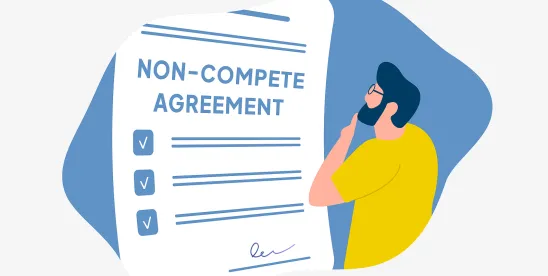On July 3, 2024, the U.S. District Court for the Northern District of Texas entered an order enjoining the enforcement of a rule established by the Federal Trade Commission (FTC) abolishing the vast majority of employee noncompetes across the United States (the “Rule” or the “Noncompete Rule”). The Court’s Order is preliminary, and it only applies to the individual plaintiffs in that case. The Court committed to issuing a final ruling on or before August 30, 2024 — before the September 4, 2024, effective date of the Rule.
The Court’s Decision Is Limited
The plaintiffs challenged the Rule under the Administrative Procedure Act, arguing that the FTC does not have the authority to adopt substantive rules defining “unfair methods of competition.” The Court agreed. “[A]fter reviewing the text, structure, and history of the Act, the Court concludes the FTC lacks the authority to create substantive rules through [Section 6(g) of the FTC Act]. Section 6(g) is “indeed a ‘housekeeping statute,’ authorizing what the APA terms ‘rules of agency organization procedure or practice’ as opposed to ‘substantive rules.’” Furthermore, “when considering the text, Section 6(g) specifically, the Court concludes the Commission has exceeded its statutory authority in promulgating the Non-Compete Rule, and thus Plaintiffs are likely to succeed on the merits.”
The Court then noted that “there is a substantial likelihood that the Rule is arbitrary and capricious because it is unreasonably overbroad without a reasonable explanation. It imposes a one-size-fits-all approach with no end date, which fails to establish a ’rational connection between the facts found and the choice made.’ ” There was no evidence, for instance, that the FTC considered more targeted approaches focusing on specific, harmful noncompetes, instead of broadly banning virtually all noncompetes.
Importantly, however, the Court’s Order was limited. In the wake of recent Fifth Circuit precedent narrowing the authority of courts to issue “universal” or “nationwide” injunctions, the Court held that no showing had been made “at this preliminary stage” to support such broad relief. Therefore, at this moment, the Noncompete Rule is only stayed “as to” the named plaintiffs in the case — one tax preparation firm in Texas and four business groups. The Court noted that no party had yet addressed the issue of “associational standing” — a legal principle where the business-group plaintiffs are deemed to represent the legal interests of their members, allowing members to invoke the Court’s ruling.
Therefore, at the moment, the Court’s injunction protects the U.S. Chamber of Commerce from FTC enforcement of the Rule against the Chamber of Commerce, but the injunction does not protect any individual members of the Chamber of Commerce. That said, the Court explained the requirements for showing “associational standing,” and it would appear that the business group plaintiffs will have strong arguments for making the necessary showing ahead of the final Court decision on or before August 30, 2024. More broadly, given that a federal court has held that the Noncompete Rule exceeds the FTC’s authority and is arbitrary and capricious, it will be challenging for the FTC to enforce the Noncompete Rule in practice.
Of course, none of this can be considered in a vacuum. The Supreme Court’s ruling ending the Chevron Doctrine — decided just this last week — has to be considered. We expect that the plaintiffs in this noncompete lawsuit will be arguing that the Supreme Court’s Chevron ruling provides further support for their position that the FTC overreached its authority by adopting the Rule.
What’s Next?
So, what should companies that use employment noncompetes do now, in advance of the next substantive action in the litigation, which should be on or before August 30, 2024?
First, given the Court’s focus on the issue of “associational standing,” it seems plausible that the Court’s ultimate ruling might only invalidate the Noncompete Rule for entities that are bona fide “members” of the named plaintiffs in the case. Therefore, businesses that want to benefit from the Court’s ruling should be prepared to join the U.S. Chamber of Commerce, the Business Roundtable, or (if applicable) the Texas Association of Business or the Longview Chamber of Commerce on or before the September 4, 2024, effective date of the Noncompete Rule.
More broadly, the legal status of the Noncompete Rule remains a live, fast-changing issue. Next Wednesday, a federal judge in Pennsylvania will hold a hearing on the validity of the Rule in a different case brought by a small business. Meanwhile, we know that further direction will come from the Northern District of Texas on or before August 30, 2024. And between then and now, the preliminary injunction decision may well be appealed to the Fifth Circuit on an expedited basis, where either the legal decision or the scope of relief might change.
What Should Employers Be Doing Now?
Our April 24 article covering the FTC’s issuance of the Rule advised as follows, with new commentary in bold:
- Prepare to distribute the required notices informing employees that their noncompetes will no longer be enforced. However, to the extent that existing noncompetes are in place with senior executives above the earning threshold and who have the requisite policy-making authority, such senior executives should be excluded from the distribution of that notice.
- This task now takes on more urgency. The Noncompete Rule requires notifying current and former employees that their noncompete agreements will not be — and cannot be — enforced going forward, with notice being provided at the employees’ last known street address, email address, or phone number. For large employers, this could be a significant undertaking to prepare. Whereas a nationwide injunction would have provided a reason to delay this preparation, it would be prudent for employers to start gathering all the information they would need to comply with the notice requirement. That said, employers should consider waiting until after further action is taken by the Court, or in another one of the cases challenging the Rule, before sending the notices.
- Businesses should explore whether they might have other ways — such as nondisclosure agreements or fixed-duration employment contracts — to accomplish some of the same goals as noncompetes.
- Businesses should review their other restrictive covenants, including non-solicitation and no-hire clauses, to ensure those clauses are narrowly tailored to protect their legitimate interests, thereby reducing the risk that they will be challenged as being within the Noncompete Rule’s catchall provision prohibiting terms that “function[ ] to prevent” a worker from working for a different company after employment.
- Businesses should have confidentiality agreements in place with employees and should prepare for a potential wave of trade secret litigation, as employees are increasingly enticed to leave their employment to work for competitors. This means businesses will need to be prepared for increased costs of data and forensic work that are generally prevalent in trade secret and confidentiality litigation matters.
- It may be time for businesses potentially impacted by the Rule to substantively review their existing agreements and policies, as described in the three bullet points above, and get started on drafting replacement forms of agreements that will comply with the Rule if it goes into effect.





 />i
/>i
